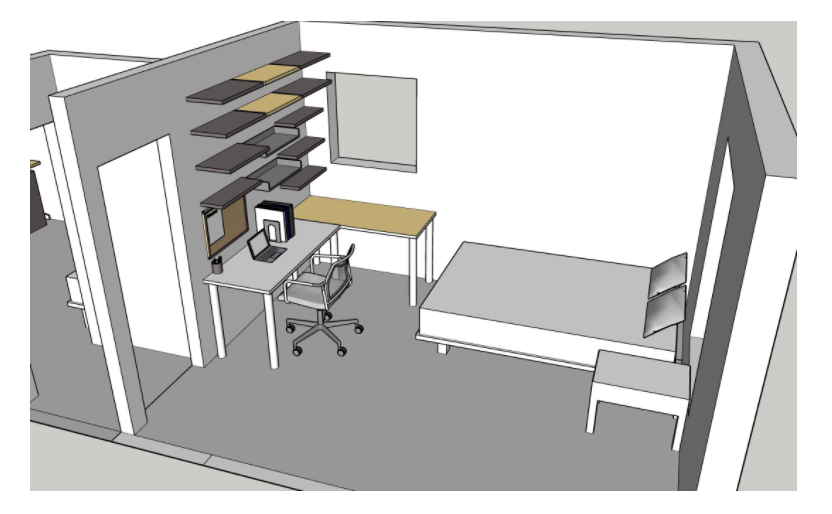From Bedroom to Classroom
Published by Interior Design Blog | Misty Woods Design,

As we all learn how to live and work together but from a social distance, we need to come up with new ways to arrange our homes to accommodate both privacy and intimacy mediated by the cool glow of our "home" screens.
Nowhere is this more important than in the preparations we must make for the continuing education of our kids. Transforming bedrooms into classrooms
In-home learning is the new normal for many families, but bedrooms might not be setting kids up for success.
Check-in with two architects to learn how a few space adjustments can help kids stay focused and comfortable while learning from home.
You can try making a SketchUp, (free) model of your kids' new in-home classroom. Make it with them, as a project, and offer support for any changes they want to make.
Here are some simple tips to consider, recommended by educators and parents.
- Workspace should be separated, as much as possible, from sleeping space.
- If your school is using two-way video calling, make sure there are decent lighting and nothing embarrassing in the background. Try to avoid putting your students back to a window. Backlighting never works.
- Keep the visual clutter down in the space immediately surrounding your student’s computer. Their desk at school would be clean and free from distractions. Try to provide the same at home.
- Give them a window over their shoulder that they can look through every now and again to take a break from looking at a screen all day long. Focusing just for a few seconds at something far away can dramatically reduce fatigue and eye-strain.
- Get a good, ergonomic office chair. The ones in our models are much nicer than the chairs we actually have, but they will work.
- Get a good keyboard and a good mouse. They don’t have to be anything special, but they have to be reliable and they have to work. Leave plenty of space around them to make it easy to use them.
- Reduce glare on the screen. Especially for computer monitors with shiny coatings, reflections during the day can be very distracting and can make it hard for your student’s eyes to focus on the screen.
- Consider where the camera is pointing, if you are using one. Make sure it is pointed at your student’s face, obviously, but also that it is neither too close nor too far away. Think like a talking head on TV.
- Make the classroom space something special, something memorable and something your student recognizes is different from the rest of your house. This is a space for learning, a space for listening and getting schoolwork done.

Essentials Checklist:
- Window/View
- Comfortable Chair
- Correct height Desk
- Desk Lamp
- Clock
- Wall Art
- Shelving
- Trash Bin
- Supplies
- Ceiling Light Fixture/Fan w/Dimmable Switch
- Accessible Outlets
